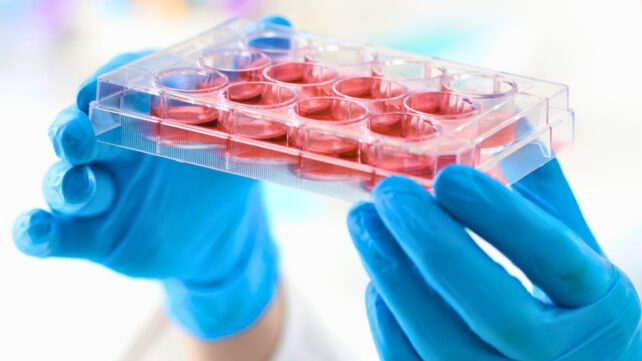Deep within your bone marrow, a specialized set of stem cells is busy pumping out new blood cells to sustain your body. As we age, these hematopoietic stem cells (or HSCs) become less productive, affecting our immune system and increasing our risk of conditions like anemia and cancer.
Now, scientists have found a way to rewind the clock in aging HSCs, which could potentially help to treat age-related blood and immune deficiencies.
Like most of our cells, HSCs contain tiny compartments known as lysosomes. These are the cells' recycling centers, where complex molecules like proteins and lipids are sent to be broken down into smaller, reusable parts.
Related: Embryo-Like 'Blood Factories' Could One Day Supplement Donations
It turns out that many of the problems that arise in elderly HSCs are due to lysosomes gone haywire, as revealed in a new study by researchers from the Icahn School of Medicine at Mount Sinai in the US and Paris Cité University.

Stem cell biologist Saghi Ghaffari led experiments in mice to find that the lysosomes in the HSCs of elderly mice were extremely acidic and downright dysfunctional. HSCs collected from old mice were in overdrive, ramping up the cell's glucose metabolism and messing with the way the cell activates and uses genetic information.
This hyperactivity is the opposite of how young HSCs behave: They are renowned for their quiescence, a reversible pause button that grants cells a period of stability and longevity by avoiding stress and DNA damage as much as possible. Quiescence also makes young HSCs more potent blood cell producers when re-awakened than aged cells.
Ghaffari and team were able to 'quieten' the distressed, elderly lysosomes in old HSCs with a chemical named concanamycin A, which returned their pH and activity levels to normal.
By removing the HSCs from mice and treating them with the chemical before returning the cells to their owners, the tissue's ability to produce new blood cells increased eight times over.
With their lysosomes stabilized, old stem cells began to behave more 'youthfully', too. Their ability to regenerate improved, and they resumed blood cell production in appropriate ratios, reversing the old HSCs' tendency to reduce the immune system's efficiency by producing more of certain cells than others.
"Our findings reveal that aging in blood stem cells is not an irreversible fate. Old blood stem cells have the capacity to revert to a youthful state; they can bounce back," Ghaffari says.
"By slowing down the lysosomes and reducing their acidity, stem cells became healthier and could make new, balanced blood cells and new stem cells much more effectively. By targeting lysosomal hyperactivity, we were able to reset aged stem cells to a younger, healthier state, improving their ability to regenerate blood and immune cells."
Elderly HSCs aren't highly suitable candidates for stem cell transplants, but the stem cells treated with concanamycin A appeared rejuvenated and were successfully transplanted in an animal model, suggesting a similar ex vivo treatment could be used to improve the success of human stem cell transplants.
Of course, further testing will be needed as the study only focused on how this all works in the cells of mice.
"Lysosomal dysfunction emerges as a central driver of stem cell aging," Ghaffari says.
"Targeting this pathway may one day help maintain healthy blood and immune systems in the elderly, improve their stem cells for transplantation, and reduce the risk of age-associated blood disorders and perhaps have an effect on overall aging."
This research was published in Cell Stem Cell.

